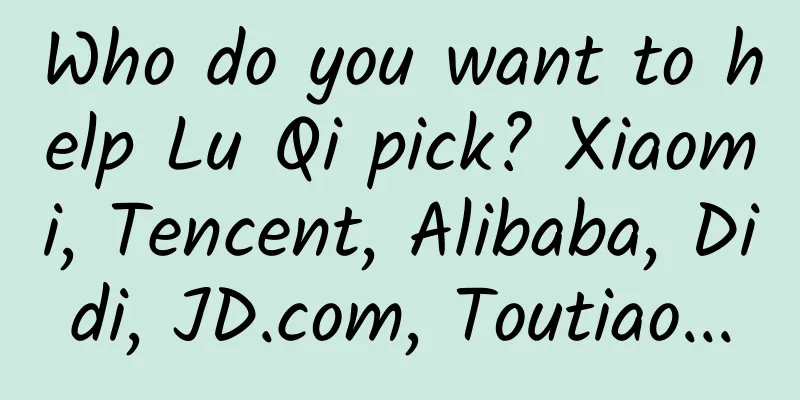Seeing the power of "her" in cultural relics

|
From ancient times to the present, countless cultural relics about women have been preserved. They have been dreaming for thousands of years, telling stories connecting the past and the present. In this issue, we will take you to trace the long-standing Chinese cultural heritage, back to China thousands of years ago, and see the power of "her" in cultural relics~ 01 Ming Dynasty Qin Liangyu Armor Image source: Chongqing China Three Gorges Museum official website Qin Liangyu's armor is 162 cm long and 113.5 cm long. The armor consists of a helmet, cloud shoulders, armor, two armor skirts, two waist guards, and two heart guards. The armor, cloud shoulders, armor skirt, and waist guard are all made of gold brocade, with gilded copper bubbles nailed all over, and the edges are decorated with square gilded copper blocks, blue satin edging, and sky blue flower fine silk lining. Close-up of the breast mirror|Source: Chongqing China Three Gorges Museum official website The upper and lower parts of the waist guard are connected by gilded copper blocks with dragon patterns carved on them. The helmet is made of copper with flower feathers and a red coral top. The heart guard is made of copper, with a plain surface and gilded dragon patterns around it. This piece of armor belonged to Qin Liangyu, a famous female general in the Ming Dynasty. Qin Liangyu, whose courtesy name was Zhensu, was from Zhongzhou, Sichuan (now Zhong County, Chongqing). She is the only hero in history who was recorded as a famous general of the dynasty and had a separate biography in the official history of generals and ministers. Qin Liangyu Pudao|Photo source: Chongqing China Three Gorges Museum official website Qin Liangyu had made many outstanding contributions and military exploits. She participated in the battles against the Qing army, She Chongming's rebellion, Zhang Xianzhong's rebellion, and other battles. She had outstanding military exploits and became the object of admiration from ancient times to the present. Emperor Chongzhen once wrote four poems to praise Qin Liangyu; the revolutionary Qiu Jin also wrote a poem to praise her: "Throughout the ages, women have been competing to be the first to win the title. Who says that beauty cannot be made a marquis?" 02 Human head-shaped painted pottery bottle Image source: Gansu Provincial Museum official website The human head-shaped painted pottery bottle was unearthed in Dadiwan, Shaodian Village, Qin'an County, Tianshui City, Gansu Province in 1973. It is made of fine red pottery, 31.8 cm high, 4.5 cm in diameter and 6.8 cm in bottom diameter. It depicts a woman with short hair that reached her forehead. It was produced approximately 5,500-6,000 years ago and belongs to the middle and late Yangshao culture. During this period, China was in the matriarchal society stage, and social production was mainly based on female gathering. The Dadiwan culture painted pottery represented by this artifact also played an important role in people's understanding of the production and living conditions of early society. Details below the abdomen|Source: Gansu Provincial Museum official website Its shape is a long cylinder with two pointed ends, the lower part is slightly inward, and the belly is bulging, which can be seen as a reflection of the worship of motherhood. Its nose and eyes are carved into holes, the mouth is slightly open, and there is a small hole in each ear. The top of its head is a round hole as the mouth of the vessel, and the upper part of the belly is covered with a light red pottery coating, which is composed of two continuous patterns composed of arc triangle patterns and oblique lines. Some scholars believe that this is a pattern that is a disguised fusion of the petal pattern of the Miaodigou type of the Yangshao culture and the fish pattern of the Banpo culture, and it has a kind of abstract beauty and mystery. Image source: Gansu Provincial Museum official website The face of the painted pottery bottle looks quiet and peaceful, revealing a unique oriental aesthetic temperament, and is regarded as an early image of the "Mother Yellow River". Its shape is inherited from the pointed-bottom bottle of the Yangshao culture, and the flat-bottomed painted pottery bottle also became a shape of the middle and late Yangshao culture. It is a landmark artifact of the Neolithic Age, which plays a role in connecting the past and the future. 03 Fuhao Owl Zun Image source: CCTV News Client Xiao (xiāo) is a general term for owls in ancient China; zun is a bronze wine vessel from the Shang and Zhou dynasties. In the Shang Dynasty, the image of Fu Hao's owl zun was endowed with the meaning of wisdom, bravery, and majesty, and was regarded as a symbol of the "god of war". The tomb of Fu Hao is the only intact tomb of a royal family member of the Shang Dynasty in Anyang Yinxu. A total of 1,928 cultural relics were unearthed, and the Fu Hao Owl Zun is one of them, which can be regarded as a great treasure of human civilization. The Owl Zun has a vivid shape and gorgeous patterns. It is the earliest bird-shaped bronze wine vessel discovered in China so far, and it is a concentrated embodiment of the artistic aesthetics, manufacturing technology, and spiritual pursuit of the Shang Dynasty. Fu Hao was the owner of the owl-shaped statue. Fu Hao, no single label can fully define her - she was not only an outstanding politician and general, but also the wife of Wu Ding, a great ruler in the late Shang Dynasty, and a fortune teller... According to oracle bone inscriptions, when a border war broke out, Fu Hao took the initiative to lead the troops to fight against the Guifang Qiang people. This war was the largest war in the Shang Dynasty, and Fu Hao won a great victory, so she is also regarded as the first female military strategist in Chinese history. During the Shang Dynasty, "the most important affairs of the state were sacrifices and wars." The large number of weapons found in Fu Hao's tomb also proved her outstanding military ability and contribution. Her assistance also made the Shang Dynasty "Wu Ding's Restoration." According to oracle bone records, Fu Hao was ordered to preside over sacrifices and serve as an official in divination dozens of times. Among the more than 10,000 pieces of oracle bones unearthed from Yinxu, the word "Fuhao" was mentioned more than 200 times, covering all aspects of Fuhao's life: wars, sacrifices, childbirth, illness, and even after her death, King Wu Ding of Shang's longing and concern for her. Some records about Fu Hao on oracle bones unearthed from Yinxu in Anyang Image source: CCTV News Client After Fu Hao died at the age of 33, Wu Ding ordered people to carefully build a pair of owl-shaped vessels to accompany Fu Hao forever. Currently, the two owl-shaped vessels are respectively stored in the National Museum of China and the Henan Museum. 04 Queen's Seal Image source: Shaanxi History Museum official website The seal of the empress is square in shape and made of mutton-fat jade. It is crystal clear and moist. The button is a Chihu with wide-open eyes and teeth showing, looking fierce and vigorous. There are cloud patterns on the four sides and the seal is engraved with the four characters "Empress's Seal" in seal script in negative. It is now in the collection of Shaanxi History Museum. Chi is a dragon without horns in ancient legends. Chihu is a mythical beast that absorbs the characteristics of Chi and tiger. Using Chihu as a button represents the kingly demeanor of ruling the world and the absolute authority that intimidates all officials. Image source: Shaanxi History Museum official website So, which empress of the Western Han Dynasty did this jade seal belong to? Because the site where it was unearthed is about one kilometer away from the Changling Mausoleum of Emperor Gaozu of Han and Empress Lü, the current consensus in the academic community is that this seal belonged to Empress Lü, the empress of Emperor Gaozu of Han. Lü Zhi, courtesy name Exu (xū), was a native of Shanfu County, Dang Prefecture (now Shan County, Shandong Province). She was the wife of Emperor Gaozu of Han, Liu Bang, and was commonly known as Empress Lü. After Liu Bang became emperor, Lü Zhi was named Empress. She participated in government affairs, offered advice and strategies, assisted Liu Bang in suppressing rebellion and fighting separatist forces, and played an important role in consolidating the unity of the Han Dynasty. As Sima Qian commented on her: "She was a resolute person, assisted Liu Bang in conquering the world, and killed the rebels. Empress Lü made the greatest contribution." After Emperor Hui ascended the throne, Empress Lü came to power and pioneered the system of ruling from behind the curtain. In the Records of the Grand Historian, Volume 9, the Chronicle of Empress Lü, the 9th chapter, it is said: "During the reign of Emperor Xiaohui and Empress Gao, the people were able to escape the suffering of the Warring States..." During the reign of Empress Lü, a solid foundation was laid for the "Reign of Emperor Wen and Emperor Jing" in all fields, including politics, economy, culture, and thought. 05 Changxin Palace Lantern Image source: CCTV News Client In 1968, a Western Han Dynasty gilt bronze ware was unearthed in the tomb of Dou Wan, wife of Liu Sheng, the Prince of Zhongshan in Hebei. The lamp was named Changxin Palace Lantern because of the inscription "Changxin Shangyu" engraved on the lamp body. Most of the bronze lamps in the Han Dynasty were in the shape of animals. The Changxin Palace Lantern is the only Han Dynasty human-shaped bronze lamp that has been seen so far. Its overall shape is a Han Dynasty palace maid kneeling with a lamp in both hands. She holds the lamp in her left hand and raises her right arm high. The wide sleeves hang down naturally, ingeniously forming the top of the lamp. According to the inscription, this lamp was cast in 172 BC (during the reign of Emperor Wen of Han Dynasty), and its original owner was Liu Jie, Marquis of Yangxin Yi. Later, Liu Jie was "deposed guilty of crimes" and the lamp was confiscated by the "Neizhe" (official title) of the Shaofu and became the property of Changxin Palace. Changxin Palace was the palace of the Empress Dowager. Empress Dou of Emperor Wen was the grandmother of Liu Sheng. She was the Empress Dowager during the reign of Emperor Jing and was very powerful. Later, Empress Dowager Dou gave the lamp to a woman named Dou Wan from her family. Dou Wan regarded the copper lamp as a treasure and buried it in her tomb after her death. According to the "Historical Records: The Family of Foreign Relatives", Empress Dowager Dou, whose name was Yifang, was born in Guanjin County, Qinghe County (now southeast of Wuyi County, Hebei Province). Dou Yifang's parents died early, leaving her, her elder brother Dou Changjun, and her younger brother Dou Guangguo to depend on each other for survival, which was very miserable. Later, she was recruited into the harem to serve Empress Lü for her beauty and cleverness. In the process of serving Empress Lü, Dou Yifang won Empress Lü's favor and was fortunately included in the list of "people out of the palace" and was selected to be assigned to Liu Heng, the fourth son of Emperor Gaozu Liu Bang. After Emperor Wen Liu Heng died, Liu Qi ascended the throne and became Emperor Jing, honoring Dou Yifang as the Empress Dowager. These two emperors jointly created the "Wenjing Reign", and Empress Dowager Dou was an important participant and witness of it. After the 16-year-old Liu Che ascended the throne as Emperor Wu of Han, Empress Dowager Dou continued to participate in politics as the Grand Empress Dowager. During the more than 40 years that Empress Dowager Dou participated in politics, the Western Han regime always adhered to the policy of ruling by inaction, healed the wounds of war, restored and developed the economy, strengthened national strength, and improved people's lives. 06 Standing Female Figurine Holding a Hu Image source: Cangzhou Museum Client The standing female figurine holding a hu was unearthed in a Tang Dynasty tomb in Dongfantun, Xian County in 1980. The figurine is made of red pottery, with a knife-shaped high bun on her head, round cheeks, thin eyebrows and long eyes, and dimples beside her mouth. In terms of clothing, the figurine wears a wide-sleeved shirt with a front opening, a skirt, a wide belt around her waist, and the end of the belt floats behind her. She holds a hu in front of her chest with both hands, and walks in cloud-shaped shoes, looking dignified and generous. This female figurine holds a "Huban" in her hand. In the Tang Dynasty, the materials of the Huban used by officials were divided according to the rank of their official positions. Officials of the fifth rank and above held ivory Hubans, while officials of the sixth rank and below used Hubans made of bamboo. The function of the Huban is similar to today's teleprompter. Officials often have to prepare their speeches in advance and write them down on the Huban to avoid omissions. However, in the Tang Dynasty, officials below the fifth rank could not easily go to court unless specially recruited by the emperor. Therefore, some experts believe that this female official figurine may be a high-ranking official. The ancient Chinese system of female officials appeared in the Zhou Dynasty, a country of rites and music, and flourished in the prosperous Tang Dynasty. As early as the Shang Dynasty, women had participated in state affairs, with Fu Hao mentioned above as a representative figure; the official system of female officials was first established in the Zhou Dynasty, and the Tang Dynasty was the peak of the status of female officials. The official title of female officials was established in the early Tang Dynasty. In addition to being responsible for palace affairs and sacrificial ceremonies, female officials in the Tang Dynasty were sometimes sent abroad by the emperor, such as serving as imperial envoys to visit foreign countries to express condolences and offer sacrifices. Epitaph cover of Shangguan Wan'er's tomb|Photo source: CCTV News After Wu Zetian came to power, she further promoted women's participation in politics. The number of women participating in politics and their influence during this period were very rare in the feudal era of China. The highest position of female officials in the Tang Dynasty could be the third rank. For example, Shangguan Wan'er was in charge of imperial edicts for many years. Whether in the fields of politics, military, economy, culture, etc., the female official system has written countless important chapters for Chinese history during its formation and development. Women's Day is not only a commemoration of women's struggle for rights in history, but also an affirmation of the achievements of women in various fields of society. At present, more and more women have demonstrated their talents and abilities in various fields such as politics, economy, science and technology, such as Tu Youyou, the first Chinese Nobel Prize winner in medicine, Zhang Guimei, winner of the "July 1st Medal", and astronaut Liu Yang... In the future, we will continue to be committed to promoting gender equality and improving women's rights. Source: Chongqing Jiulongpo District Cultural Relics Management Office Audit expert: Li Xiaoying Sources: CCTV News, China News Service, Hebei Museum, Shaanxi History Museum, Longnan Museum, Cangzhou Museum, Journal of Ludong University "Empress Dowager Dou - Behind-the-scenes Defender and Promoter of the Laissez-faire Politics in the Early Han Dynasty", Xinhuanet, Chongqing China Three Gorges Museum Image sources: Photo Network, CCTV News, screenshots of CCTV program "Discovery", Cangzhou Museum, Shaanxi History Museum, Gansu Provincial Museum, Chongqing China Three Gorges Museum Statement: Except for original content and special notes, some pictures are from the Internet. They are not for commercial purposes and are only used as popular science materials. The copyright belongs to the original authors. If there is any infringement, please contact us to delete them. |
>>: Why can a can that can’t be opened be opened by tapping the bottom?
Recommend
IDE for React Native Development
I'm currently using Atom and Nuclide. Althoug...
99% of startups fail: Is decentralization the cure?
A few days ago, I wrote an article titled " ...
Should I open the windows? — A bizarre COVID-19 outbreak
After three years of fighting the epidemic, weari...
Can LeEco’s smartphone ecosystem continue to differentiate itself?
Recently, a high-definition spy photo of LeTV'...
What is the truth behind the popularity of the APP "Catch Dolls Everyday"?
Recently, I often see advertisements for the Tian...
Frequent early awakening may be a disease. What time is considered "early"?
Have you ever had this experience: you woke up be...
How much does it cost to attract investment through Shaoxing Dance School’s mini program?
Starting a business requires costs, and mini prog...
14 lessons on how to monetize your listening manuscripts without any basic knowledge, earn money while studying, and easily earn 5,000+ a month in your spare time (completed)
14 lessons on how to monetize your listening manu...
Get 40,000 paying users in 7 days, revealing the low-cost growth reusable model!
This article is a review of a 9-yuan course distr...
How to write a hot topic title? Share 5 tips!
Hot topic titles have always been one of the more...
A large collection of promotion channels, see which ones you need!
1 WeChat is a semi-closed circle. “Good wine need...
Animal "hard work" red and black list to see which animal is the laziest?
Today is May 1st International Labor Day. Labor i...
How to retain users through membership system? A brief analysis of the Ele.me Super Membership Card!
As a veteran office takeout delivery buyer, I oft...
Android performance optimization: How to avoid creating unnecessary objects in Android
[[169562]] In programming development, memory usa...
Analysis of advertising placement on Xiaohongshu & Zhihu
On March 5, Zhihu officially submitted its prospe...









